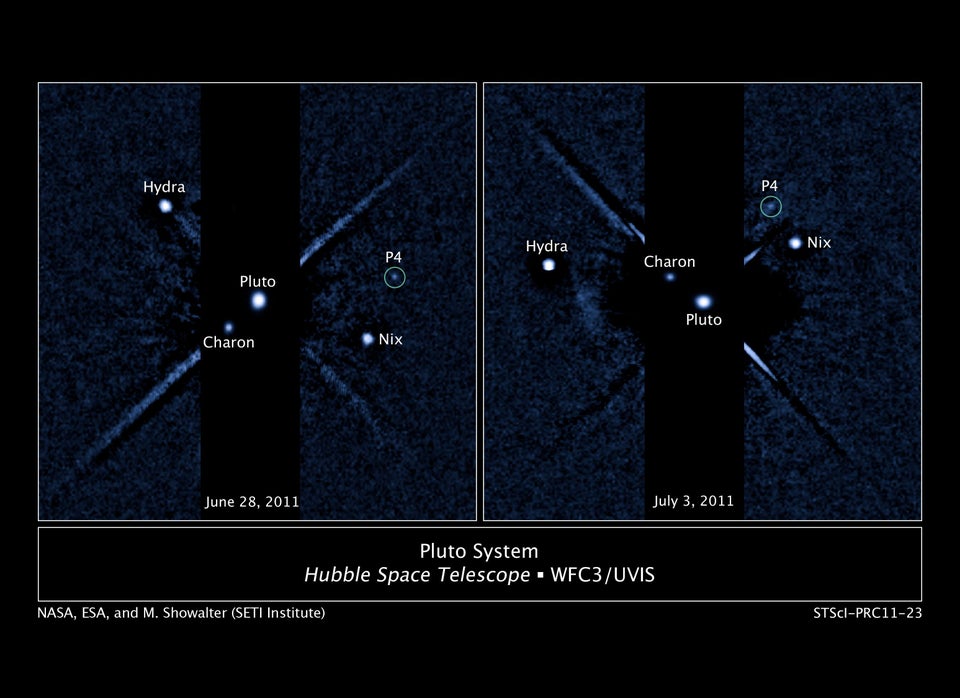Have you ever heard the term string theory and wondered WTF it means? When it comes to theoretical physics, it seems like there are a lot of larger-than-life concepts that have made their way into our everyday conversations. But how often do we stop to understand what they represent? What is superstring theory? What can it tell us about where we came from, where we're going? Why should we even care?
I had the opportunity to ask theoretical cosmologist and, as it happens, one of Chicago's most eligible bachelors (no lie!), Mark Jackson, to help me learn more about superstring theory. Watch the video above for a primer. And don't forget to sound off by leaving your comments below. Come on, talk nerdy to me!
MARK JACKSON: Superstring theory is a bit controversial because even though mathematically it fits together very well, there’s really no experimental evidence for superstring theory.
CARA SANTA MARIA: Hi everyone. Cara Santa Maria here. And that's Mark Jackson. He's a theoretical physicist at the Paris Centre for Cosmological Physics, and he's currently doing research for the Institut d'Astrophysique de Paris and the University of Illinois. His specialty is superstring theory, a term we often hear thrown around in the sciences, but how many of us really know what it is? I asked him to explain.
MJ: Imagine you had a very cheap guitar, which had only one string, even though it only has one string, you can still make several different notes with that one string just by plucking it at higher and higher frequencies. So we hear these different frequencies as different notes all on really just one string. Now in a completely analogous way, we see a lot of different particles in the universe, but actually according to superstring theory, all these particles are actually just very small strings.
CSM: Ah. So if we zoom down, as small as we can go, we can break down molecules into atoms, and atoms into subatomic particles. But string theory says that even those particles can be seen at a smaller scale, that really, it's all made up of strings.
MJ: The size of an atom is about a billionth the size of a coffee cup. And a string is about a billionth, billionth, billionth the size of the atom. And this illustrates exactly how small these strings are. And so it’s not surprising that as long as you’re far away from the strings, as long as you don’t have enough energy to fully resolve what exactly the string is doing, of course, you would see this is a particle.
CSM: Of course, these theoretical strings are so incredibly tiny and vibrate at such high energies, we can't directly measure them. Even particle accelerators, like the Large Hadron Collider at CERN, can't spin these particles around fast enough, smash them together hard enough, to produce the energy needed. So how do we know they're really there? Or do we? Mark says that although we're limited by our current technology, there is one way to indirectly look for evidence of superstring theory.
MJ: We’ve had to be more creative, and only in the past few decades have people started using cosmology as a very high-energy experiment. And so nature already did this experiment for us, it was called the Big Bang. Even though we can’t redo it, there was this echo of the Big Bang, which is called the cosmic microwave background, and is something that we can observe today.
CSM: Cosmic microwave background radiation. This is the thermal radiation that fills the entire observable universe, thought to be remnants from the Big Bang. It's helping theoretical cosmologists, like Mark, translate their work into an experimental science.
MJ: Cosmology is different from other types of physics because we can’t re-do the creation of the universe. We only have one universe. So it’s not like we can just do an experiment a thousand times and get a good statistical average.
CSM: So they work with what they've got. And this so-called precision cosmology comes from studying signatures IN the cosmic microwave background radiation--that first light, from 380,000 years after the Big Bang, when the universe cooled enough to become transparent.
MJ: Cosmologists are trying to answer the questions of how the universe began, what it’s made of, and where it’s going.
CSM: And how cool is it that through this research, he's getting closer to answering these fundamental questions--learning about our place in the vast expanses of the known universe by looking back in time, almost 14 billion years ago? Alright everyone, I gotta know. Does superstring theory resonate with you? You like that? Resonate? Huh? Alright fine. Hit me up on Facebook, Twitter, or leave a comment right here on The Huffington Post. Come on, talk nerdy to me!
See all Talk Nerdy to Me posts.
Like Cara Santa Maria on Facebook.
Follow Cara Santa Maria on Twitter.
